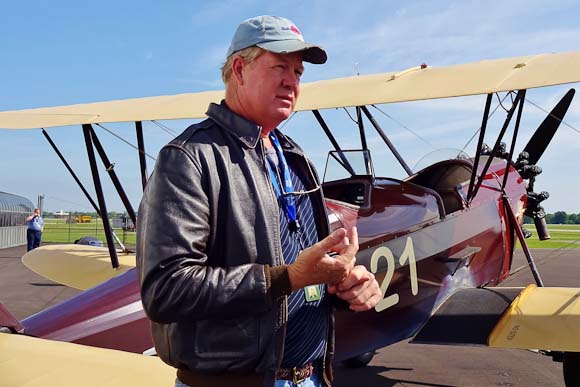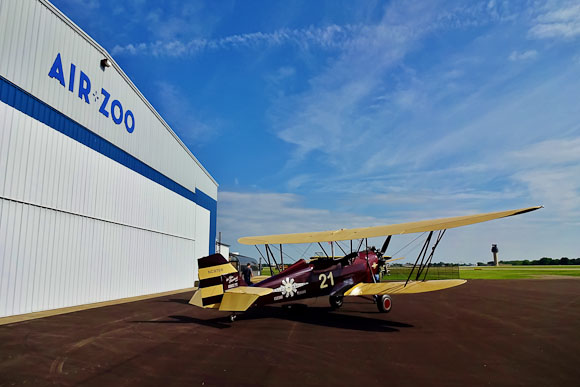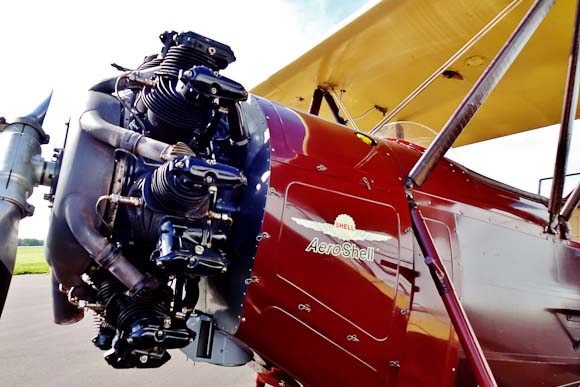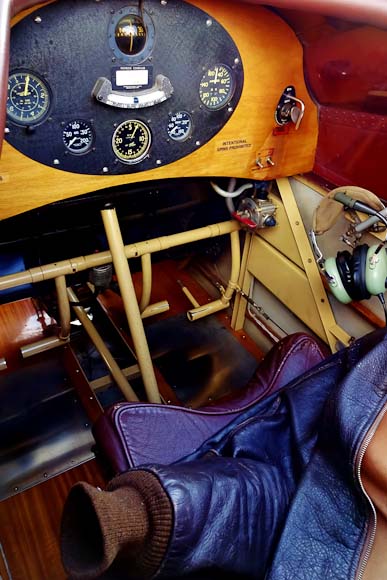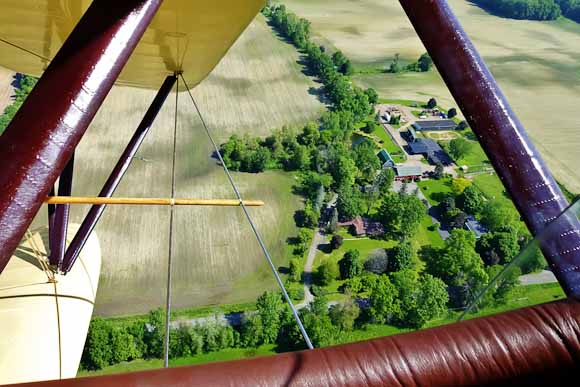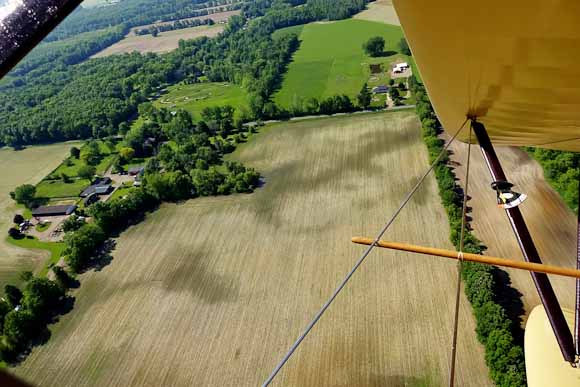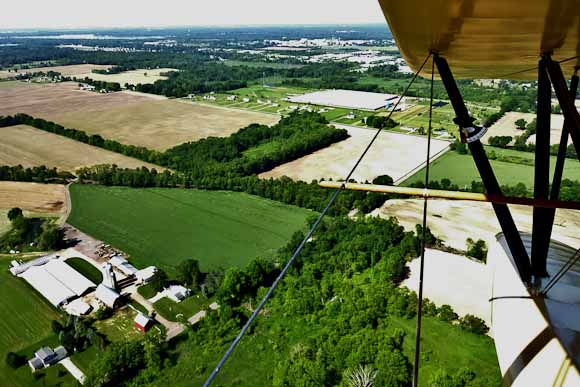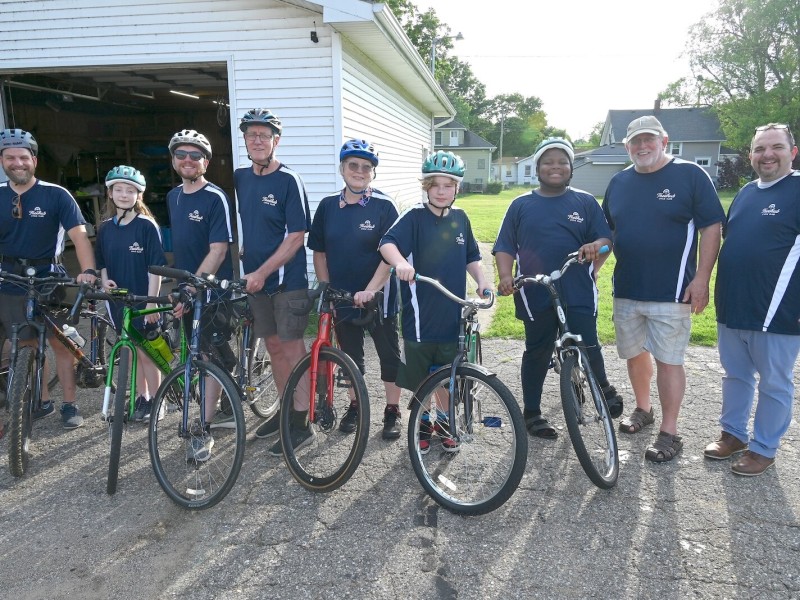The return of the Barnstormers
There's none of today's airport hassle when flying yesterday's biplanes, now taking flight from the Air Zoo.
In 1929, when the D-25 biplane first took to the skies, so many people lined up for their first, possibly only, flight experience that the pilots took them up into the air for only a minute or two, usually for a dollar per person. The tiny open-cockpit planes were built from wood, the wings made out of spruce, and the body of the plane from cotton and linen over a wooden frame.
In the 1990s, Waldo Wright’s Flying Service, long-time partner of the Air Zoo, 6151 Portage Road in Portage, refurbished a couple of the biplanes and brought the New Standard D-25 to Portage to relive the days of barnstorming. The biplane that today takes passengers into the skies over Portage is one of eight such biplanes remaining from the 62 originally built. Cotton and linen have been replaced with sturdier Dacron polyester. And Waldo Wright’s Flying Service, traveling to various museums in the country, has grown into America’s largest vintage biplane ride company.
“The D-25 was built to take up to four passengers up into the air,” says the flight service owner and chief pilot Ron Lock. Before that, he says, the first planes would hold only one or two passengers.
The term “barnstorming” came from stunt pilots who traveled across the country performing tricks in the air—in a kind of flying circus—to show how safe and sturdy planes could be. Charles Lindbergh was one of those Roaring Twenties barnstormers, gaining fame in later years for the first airplane flight to cross the ocean.
“We’ve taken more than 60,000 people flying since we first began 15 years ago,” says Jill Manka, operations manager for Waldo Wright’s Flying Service. “It’s a multi-sensory experience, and there’s no age limit. We’ve taken people up as young as 3 weeks, as old as 99 years. And we can take people up who have mild disabilities.”
The Air Zoo is offering the vintage biplane rides through September, weather permitting, seven days per week. A 15-minute ride on the 1929 New Standard D-25 costs $69.95 plus tax and fuel surcharge per passenger, up to four passengers per flight, two person minimum. Helmets and goggles are provided. A 1942 Boeing Stearman is also available for 30-minute hands-on flights at $229 plus tax and fuel surcharge.
Pointing to the 1942 Boeing Stearman, Lock says: “It’s how 18-year-old World War II cadets learned how to fly combat missions. We give two-minute lessons here and then let people fly.” Freshly minted pilots must be at least 10 years old and more than 5 feet tall. An experienced pilot with dual controls accompanies the new pilot.
“We bring the fun back to flying,” says Lock. “Airliners take you from point A to point B, but the vintage biplanes are about more than transit. You can feel the wind in your face, smell the exhaust from the plane, see the world below at a slow and easy 75 miles per hour, at about 800 to 1,000 feet above the ground. We do a few lazy turns, about a 45-degree angle turn, and you can put your hands outside the cockpit and take photos or shoot a video.”
As a boy, Lock had dreamed of being a commercial pilot, but as the boy grew up into a man, 6’10″ tall, he found he was too tall to fly airliners. He found his place in the vintage biplanes, and he has flown thousands of hours since. He recently flew the vintage biplane 13 hours over two days from Florida to Michigan, enjoying travel through time as much as travel through air with a birds-eye view.
“I get a kick out of seeing people’s reaction to their first flight.” Lock smiles. “If at first they might be a little fearful, they come back with a big smile on their faces, with a memory to last a lifetime. Flying is supposed to be fun. There’s no baggage handler here, no TSA agent.”
Up and away
The first passenger of the day climbs up on the wing of the vintage biplane, up and over into the cockpit with its leather seats, and slips her goggles over her eyes. Sitting at back, Lock starts the engine, and the propellers up front begin to whir and circle, impossibly slow.
Yesterday meets today, as commercial airliners out of the Kalamazoo/Battle Creek International Airport next door race down the runway and soar up into the clouds, quickly a distant dot and fading contrail, while the D-25 waits patiently at the runway turn. In minutes, all the commercial airliner passenger sees is a receding horizon and a flight attendant explaining emergency procedures.
In the D-25, the passenger feels the breeze pick up in her face, a loose strand of wind-blown hair tickle her cheek, a slant of sun cross her goggled eyes, a whiff of exhaust tickle her nostrils, and gradually, ever so slowly, the tiny plane begins to ride on the breeze.
The yellow spruce wings waggle in the wind a bit, and the ground below becomes a patchwork quilt of green tree tops and freshly plowed fields. The city of Kalamazoo rises on the distant horizon. A small, deep blue lake below reflects a cloud or two, but the sky is otherwise clear and open in all direction, invitingly blue.
A quick glance over the shoulder reveals the pilot. But for his mirrored sunglasses, reflecting one grin back at the other, it almost seems a scene from a time long ago. For a moment, the spirit of Lindbergh seems close.
A few of the original 62 biplanes became crop-dusters, were used in the military or other service organizations, but quite a few flew moonshine from secret place to secret place during the Prohibition and were eventually destroyed. At the Air Zoo this summer, a bit of aviation history survives and takes wing, creating new memories.
To book a flight at the Air Zoo’s East Campus, 3101 E. Milham Road, call 863.873.1339.
Zinta Aistars is creative director for Z Word, LLC, and correspondent for WMUK 102.1 FM Arts and More program. She lives on a farm in Hopkins.
Photos by Zinta Aistars

